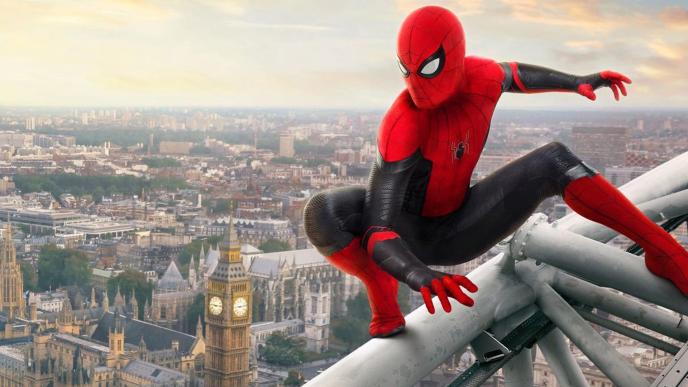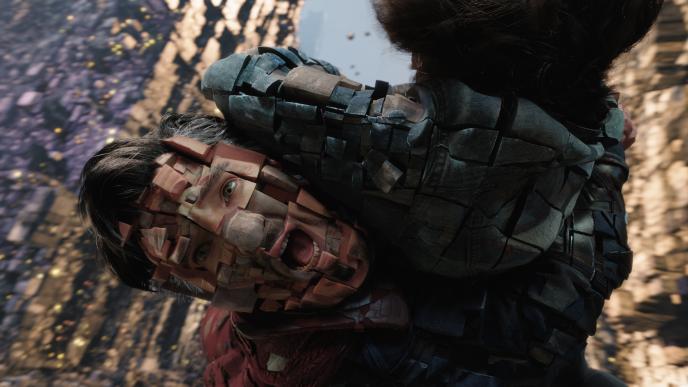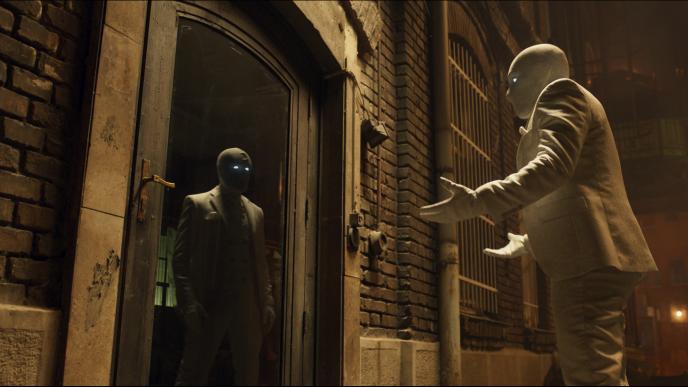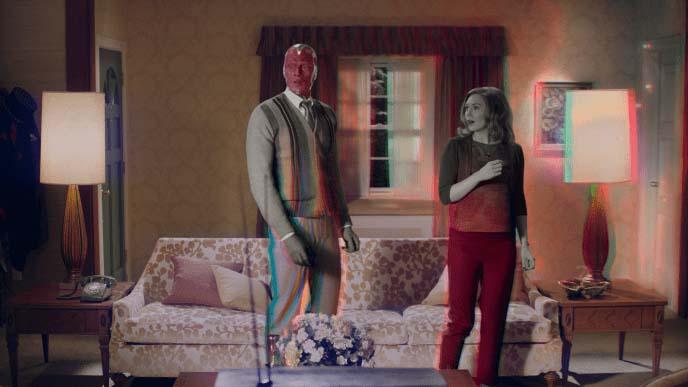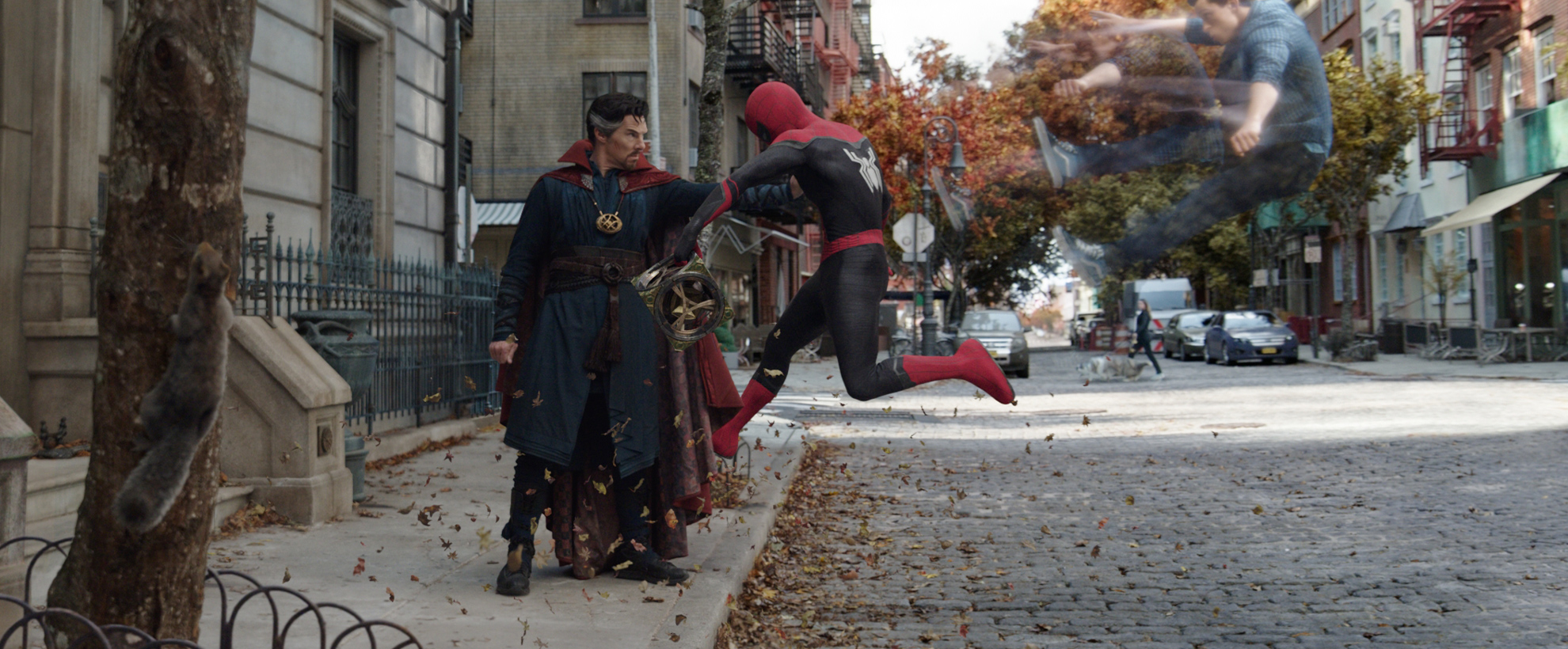

Spider-Man: No Way Home
We started getting visitors… from every universe.
Our Montréal team, along with Framestore’s Adrien Saint Girons and Christian Kaestner are thrilled to have delivered VFX on the highly anticipated Spider-Man: No Way Home, working on close to 250 shots that covered incredibly complex environments and FX work.
Framestore was involved in the creative process from early concept art through to the show’s final VFX, working closely with director Jon Watts on the ‘spellbound’ sequence that opens the doors to the mirror universe, as well as the epic, reality-skewing chase sequence between Doctor Strange and Spider-Man that twists New York City out of shape and merges it with epic landscape of Arizona’s Grand Canyon. “We were thrilled to be working on such an epic franchise and the artists were really excited too,” says Saint Girons.

It was a privilege for us to hone the director’s vision and particularly to showcase our FX and environment talent on a film that has been so successful and so well-received.
Spell Gone Wrong
In the ‘Spell Gone Wrong’ sequence, Doctor Strange performs a spell using an ancient relic to erase the collective memory of Peter Parker as Spider-Man, which goes horribly wrong and opens the doors to the multiverse villains. As part of this momentous encounter, the team was tasked with designing the spell that Doctor Strange casts. “Magic can take on a variety of forms so we explored a number of avenues before settling on the magical ruin rings and alphabetic runes,” explains Saint Girons. The basement where the spell is cast was also a technical challenge as it needed to explode and come back together. “We created a CG version of the set and the FX team developed a complex vortex simulation triggered by the spell rings,” explains Saint Girons.

Spider-Man and Doctor Strange Chase
In the ‘Spider-Man and Doctor Strange Chase’ sequence, Doctor Strange attempts to solve an ancient artifact in order to send the villains back into their respective dimensions when Spider-Man puts a halt to the spell, leading the two into a chase throughout the streets of New York and into unknown realms. “The sequence as a whole really forced us to push things to another dimension - no pun intended,” says Kaestner. To create the city, artists relied on procedural methods thanks to a huge library of elements that includes facades, store fronts and street dressings. Based on OSM data, they were able to capture footprint and building heights and then populate the city with bespoke landmarks so as to have it look and feel like the Big Apple.
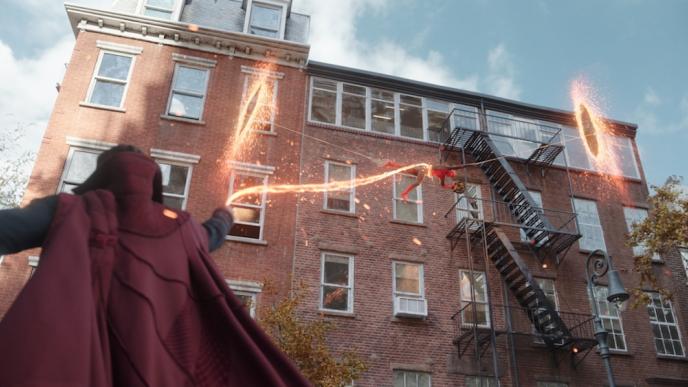
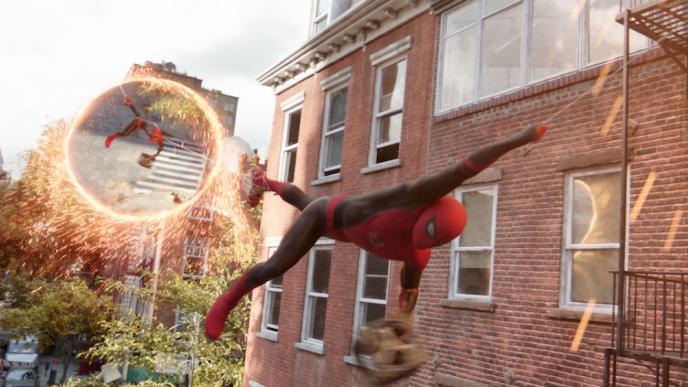
Part of the complexity of the environment work involves Spider-Man and Doctor Strange rushing through a department store, which was a project in and of itself. “This sequence had to be choreographed to the second and heavily relied on previs-inspired concept art and layout,” explains Saint Girons. The challenge increases as the photoreal environment blends and evolves from New York into the Grand Canyon. “We created a workflow that allowed the layout department to place islands of New York city with a base of the Grand Canyon created using procedurally-upgraded Google data on top of the city plates,” says Saint Girons.
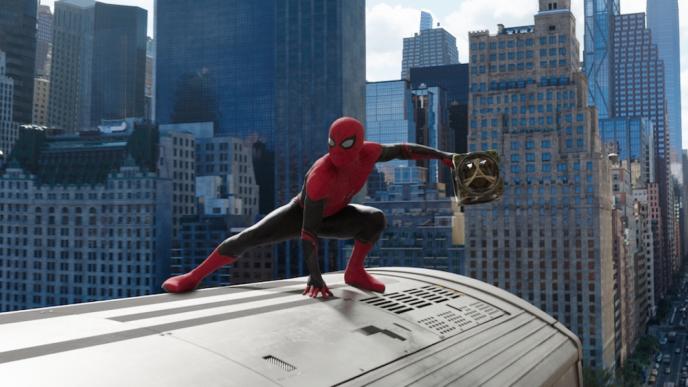
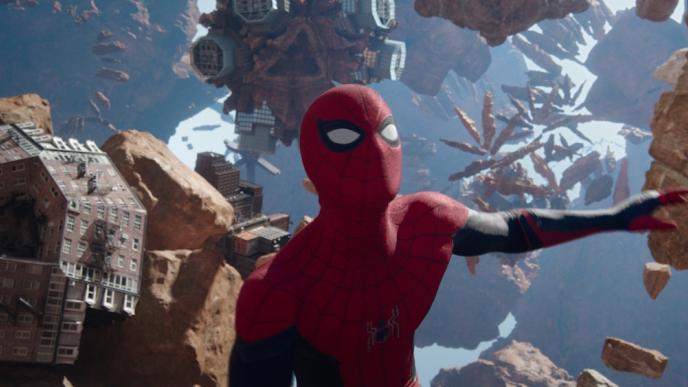
To develop the iconic kaleidoscoping look, the team created new techniques to give animation the ability to bend the city and then FX added their own magic touch. “Building New York as a whole is a gigantic undertaking and adding the ability to bend it was an even bigger, more exciting challenge,” explains Kaestner. This sequence also sees Spider-Man trapping Doctor Strange with the use of maths and geometry, meaning the team dove into their left-brain to develop formulas that created interesting-looking designs. “It was a hugely creative undertaking and our team worked hand-in-hand to meet the high standard VFX expected of a film that’s part of the Marvel Cinematic Universe,” concludes Saint Girons. “We’re really proud of the end result.”
